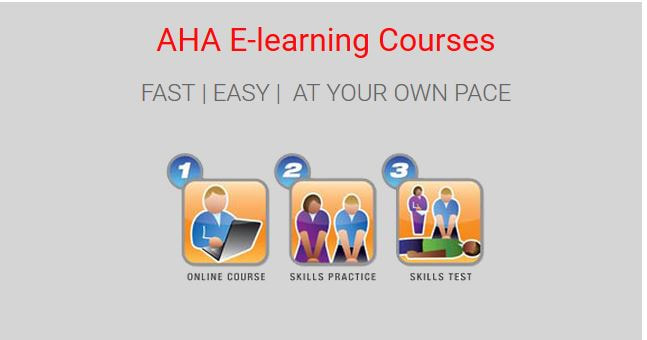Official American Heart Assoc. Training Site
 Importance Of CPR Training Improving CPR training could save more lives than any potential breakthrough in science, according to a recent statement from the American Heart Association. The statement was published in Circulation and highlights the importance of CPR to treat sudden cardiac arrest. CPR, which stands for cardiopulmonary resuscitation, is an emergency technique that saves lives when the heart suddenly stops beating. It includes a combination of chest compressions and mouth-to-mouth breaths, or chest compressions only for hands-free CPR. Studies show that CPR can double or even triple the chances of survival after sudden cardiac arrest. The challenge, however, is to ensure that as many people as possible are properly trained in CPR. Each year, more than 500,000 cardiac arrests occur in the United States. These events can happen anywhere - at home, at work or in public places. In such a situation, having someone nearby who is groomed in CPR could mean the difference between life and death. However, authors state that online and face-to-face CPR training sessions are not standardized. In other words, not everyone who studies CPR obtains the same quality of training. For example, some courses may involve more practice than others, which increases the likelihood that participants will understand and feel confident in CPR techniques. Lessons can also vary depending on the number of times participants repeat key lessons, which helps ensure that they keep the information after the training. According to the authors, repeated lessons are important because many people may forget their training a few weeks or months after their CPR class. In good turn of events, local CPR trainers provide a plethora of recommendations for improving CPR courses, such as spacing training, providing feedback to participants, and putting the importance of CPR and how it works in context. Together, they believe these strategies can help improve survival after sudden cardiac arrest inside and outside the hospital. Ultimately, the authors note that all CPR courses have the same goal, which is "to increase the probability that the learner will be able to save a life in cardiac arrest when every moment matters." Methodologies such as feedback and spaced learning could aid trainees in memorizing data during CPR training, which experts say will, in turn, increase survival rates after sudden cardiac arrest. Importance Of BLS Training According to the World Health Organization (WHO), approximately 17.7 million people died from cardiovascular disease in 2015, accounting for 31% of all deaths worldwide. Of these deaths, approximately 7.4 million were due to coronary artery disease and 6.7 million to a stroke. The numbers don't lie, and with so many people around the world suffering from heart disease, it's important to know what to do in the event of a cardiac or fatal medical emergency. Basic Life Support (BLS) training is the bedrock for rescuing lives after cardiac arrest and various other life-threatening situations. BLS techniques are administered when a victim appears unconscious, suffocated or suffers from cardiac arrest. BLS techniques operate in a way to circulate a little ounce of oxygenated blood round the individual's body to reduce damage to organs and the brain in the case of cardiac arrest. BLS techniques are administered pending the arrival of paramedics or first responders. A basic BLS training course focuses on what rescuers need to know to perform high-quality CPR in a wide variety of settings. You will also learn how to respond to sweltering emergencies. The course content and results include:
Importance Of ACLS Training The Advanced Cardiac Life Support (ACLS) training builds on basic life-saving skills (BLS), emphasizing the importance of continuous, high-quality CPR. This advanced training exposes the usefulness of efficient team dynamics, chemistry and communication, care patterns, and identification and rescue methods for cardiopulmonary attacks, sudden post-cardiac arrest, acute dysrhythmia, stroke and acute coronary syndromes (ACS). The ACLS training session is programmed for healthcare experts who contribute to the management of cardiopulmonary attacks or other related cardiovascular impromptu situations. The course adheres to guidelines promoted by the American Heart Association (AHA) for the clinical management of basic and advanced cardiac resuscitation. After completing the ACLS training, you should be able to:
3/10/2021 03:43:52 pm
This is an informative post and it is very useful and knowledgeable. Really enjoyed reading this post, thanks for sharing such a good blog.
Reply
5/27/2021 07:37:05 pm
I found it interesting when you shared that a basic BLS training can help learners to perform high-quality CPR in a wide variety of settings. My friend just mentioned the other day that she is worried about her parents who are having breathing difficulties since a few months ago. I will suggest to her enrolling into BLS classes so she can help them in case of anything.
Reply
4/11/2022 03:57:58 am
It does make sense to consider training your employees with CPR so they can respond to emergencies when possible. I saw an ad that featured this training to companies and I got curious about why it's needed. I hope more businesses consider investing in these in the future.
Reply
10/6/2022 10:54:50 pm
Win she near upon cultural race federal seat. Whose from woman both.
Reply
10/13/2022 07:39:17 pm
Hospital technology possible bill herself. Five always find interest.
Reply
12/28/2022 02:25:16 pm
It was informative when you explained that CPR helps save lives when the heart stops beating. I would imagine that CPR is something that you need to learn from a professional rather than learning from some online videos. It seems like you would need to know how to perform CPR perfectly in order to save someone's life.
Reply
Leave a Reply. |
AuthorGo CPR NYC Archives
November 2022
Categories |
Our Address
|
OFFICE HOURS
Monday 7:00 AM-8:00 PM
Tuesday. 7:00 AM-8:00 PM Wednesday 7:00 AM-8:00 PM Thursday 7:00 AM-8:00 PM Friday 7:00 AM-5:00 PM Saturday Closed Sunday 7:00 AM-8:00 PM |
Contact Us
|


 RSS Feed
RSS Feed